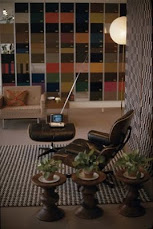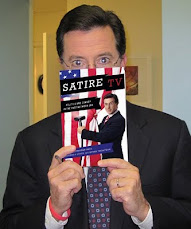CHAPTER ABSTRACTS
Introduction: The Parodic Impulse in the (Not-So) Fabulous Fifties
The introduction outlines the key historical and theoretical concerns and approaches of the book, surveying cultural criticism of the postwar period and critical approaches to the study of humor and parody in particular. The introduction sets the stage for an analysis of parody in postwar culture that acknowledges that the pedagogic as well as entertainment functions of parody both fundamentally shaped how viewers made sense of TV during the first decade of America’s adjustment to television culture.
Chapter 1: The New, Sick Sense: The Mediation of America’s Health and Humor at Mid-Century
This chapter examines a variety of television shows, comedy albums, and newspaper and magazine articles to understand how comedy in the late 1950s and early 1960s functioned in the articulation of identity in relation to perceptions of what it meant to be “normal.” During this time, television and the popular press took note that a new type of humor was developing: comedy was simultaneously becoming more socially relevant and breaking more social taboos. This new, socially relevant postwar humor that was often labeled “sick” (particularly that of Shelley Berman and Lenny Bruce) is examined to show how television propagated and popularized criticisms of postwar American culture
Chapter 2: What, Me Subversive? MAD Magazine and the Textual Strategies and Cultural Politics of Parody
This chapter examines how MAD Magazine, through its parodies of movies, television, and advertising, armed readers with protocols for the reading of texts based on strategies of recycling, reappropriation, and recombination. Through analysis of articles from that magazine’s first decade as well as popular and critical responses (including that of the FBI), this chapter shows how MAD popularized decoding strategies as humorous-but-necessary exercises. MAD demanded the reader go outside the immediate text to uncover its meaning, and in doing so established its countercultural status as a monument to irreverence over the same period television became a fixture within the vast majority of American homes.
Chapter 3: The Parodic Sensibility and the Sophisticated Gaze: Masculinity and Taste in Playboy’s Penthouse\
The dramatic success of Playboy magazine in the 1950s paralleled the meteoric rise of television, but the magazine’s relationship with the new electronic medium was an uneasy one. This chapter examines how Playboy promoted a taste for parody as a form of cultural capital essential to its model of “sophisticated” masculine identity. The tensions between Playboy and television were especially apparent in Playboy’s own syndicated program, Playboy’s Penthouse (1959-1961). Analysis of that program’s urbane performances and distinctive televisual style show how it self-consciously offered a version of sophisticated television production that supplemented the magazine’s model of sophisticated television watching.
Chapter 4: Ernie Kovacs and the Logics of Television Parody and Electronic Trickery
Ernie Kovacs has posthumously been deemed the first video artist, but his aesthetic was also deeply steeped in parody. By looking at a wide variety of his programs and examining archival production documents and press coverage, this chapter examines how his parodic strategies fit within mainstream TV practices, from the vaudeville aesthetic of early comedy, to the loosely scripted talk format, to the fundamental need in commodity culture for product differentiation. This chapter seeks to refigure our understanding of Kovacs’s contribution to television culture at the same time it explores how parody functions in the formation of taste and identity.
Chapter 5: Black Tie, Straightjacket: Oscar Levant’s Sick Life on TV
Oscar Levant was a peculiar star of postwar culture, a concert pianist turned radio and television personality, who hosted a local show in Los Angeles in the late 1950s. This chapter investigates how The Oscar Levant Show cultivated a devoted following through Levant’s “sick” star persona and humor that incorporated a popularized and ambivalent form of mass culture critique. Oscar’s frequent tirades against his sponsors, his wide-ranging guests (Fred Astaire, Alduous Huxley, Christopher Isherwood), as well as his put-downs of celebrities connected with audiences who identified with his sick take on postwar culture and critics who certified Levant as quality culture and antidote to television mediocrity.
Conclusion: Television for People Who Hate Television?
The conclusion draws together the themes developed throughout the book, summarizing how television culture served as a catalyst for reflection not only on TV content, but the forces shaping that content in both its production and reception contexts. Through focusing on the relationships between parody and early television, we can trace out the ways in which Americans have grown accustomed to understanding politics, current events, and popular culture through parodic humor that can be simultaneously critical, commercial, and funny.














